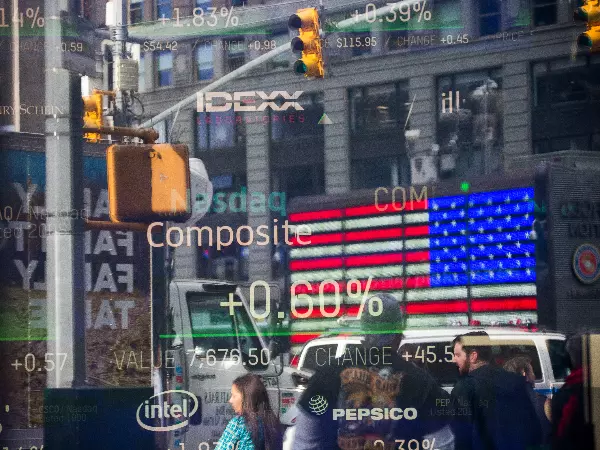US stocks outlook: can it reverse its downtrend this October?
The global stock market has finally closed the book on what has been the most challenging month of the year. What are the key factors to watch for into the final quarter of the year?

The global stock market has finally closed the book on what has been the most challenging month of the year. Both the S&P 500 and the tech-heavy Nasdaq fell by nearly 5% in September, while the Dow Jones declined by 3.2% for the month. The big question on everyone's mind is whether this downtrend can be reversed in the months ahead. What are the key factors to watch for into the final quarter of the year?
S&P500 October key watch
Wall Street kicked off the first trading day of October and the last quarter of the year on a cautiously positive note. The S&P 500 finished marginally higher, and the Nasdaq gained nearly 0.7%. The day was marked by a better-than-expected ISM Manufacturing PMI, signaling the beginning of the fourth quarter with hints of a potential easing in the contraction of the US manufacturing sector and associated price pressures.
Notably, the prevailing sentiment stemming from the Federal Reserve's September meeting, which suggested that interest rates would remain elevated for an extended period, continues to serve as the backdrop for the equity market's risk landscape. Consequently, even though there is no Federal Open Market Committee (FOMC) meeting in October, discussions surrounding the price pressure are expected to remain a focal point for the month ahead.
Furthermore, from the second week of October, the Q3 US earnings season will provide more insights into corporate revenues and profits. Currently, it appears that the third-quarter earnings season may witness another decline in earnings, further squeezing corporate margins. According to Factset, by the end of September, 64% of companies providing earnings per share (EPS) guidance are projecting negative EPS. This percentage is above the 5-year average of 59%.
However, it's worth noting that in the past two earnings seasons, despite the overall results being less impressive, a significant number of companies still exceeded expectations and outperformed the consensus forecasts. For instance, during the April to June quarter, 79% of reporting companies surpassed their forecasts, above the five-year average of 75%.
S&P500 in Q4
In fact, despite the sharp decline from August to September, the S&P 500 remains 10% above its opening position in 2023. Historically, the chances of the fourth quarter preserving yearly gains after a mid-year correction are not uncommon. According to the chart below, in the past 12 instances when the S&P 500 followed a similar pattern to that of 2023, the fourth quarter enjoyed a minimum 2.14% and an average 8.39% quarterly return.

S&P500 technical analysis
The daily chart of the US 500 has depicted a clear downward trajectory from the year's peak above 4500.
Last week's retreat has brought the S&P 500 to a vital support area, which includes the 200-day moving average, the year-long trend line from October 2022, and the peak from August 2022, situated between 4258-4287.
Based on the price action in the past five sessions, it appears that the significance of this level has notably eased the selling pressure and successfully pushed the RSI out of oversold territory for the time being. On the other hand, a significant resistance zone lies between the August low and the 20-day SMA at 4340 to 4376.

The information on this page does not contain a record of our trading prices, or an offer of, or solicitation for, a transaction in any financial instrument. IG Bank S.A. accepts no responsibility for any use that may be made of these comments and for any consequences that result. No representation or warranty is given as to the accuracy or completeness of this information. Consequently any person acting on it does so entirely at their own risk. Any research provided does not have regard to the specific investment objectives, financial situation and needs of any specific person who may receive it and as such is considered to be a marketing communication. Although we are not specifically constrained from dealing ahead of our recommendations we do not seek to take advantage of them before they are provided to our clients. See full non-independent research disclaimer.

Discover how to trade the markets
Learn how indices work – and discover the wide range of markets you can trade CFDs on – with IG Academy's free ’introducing the financial markets’ course.
Put learning into action
Try out what you’ve learned in this index strategy article risk-free in your demo account.
Ready to trade indices?
Put the lessons in this article to use in a live account – upgrading is quick and easy.
- Get fixed spreads from 1 point on the FTSE 100, 1.2 on the Germany 40, and 0.4 on the US 500
- Protect your capital with risk management tools
- Trade more 24-hour markets than any other provider
Inspired to trade?
Put your new knowledge into practice. Log in to your account now.
Live prices on most popular markets
- Forex
- Shares
- Indices
Prices above are subject to our website terms and agreements. Prices are indicative only. All shares prices are delayed by at least 15 mins.

